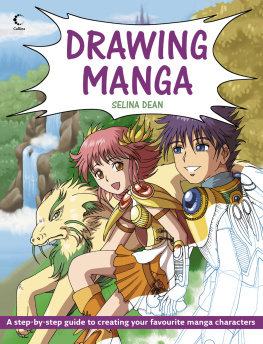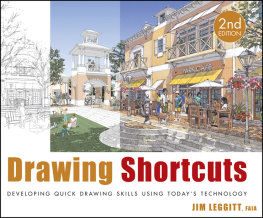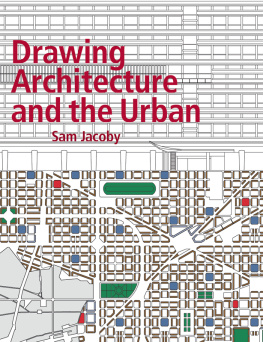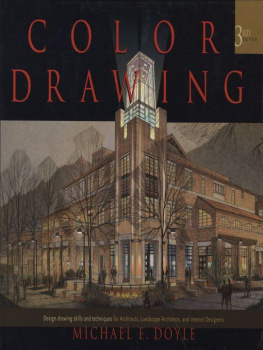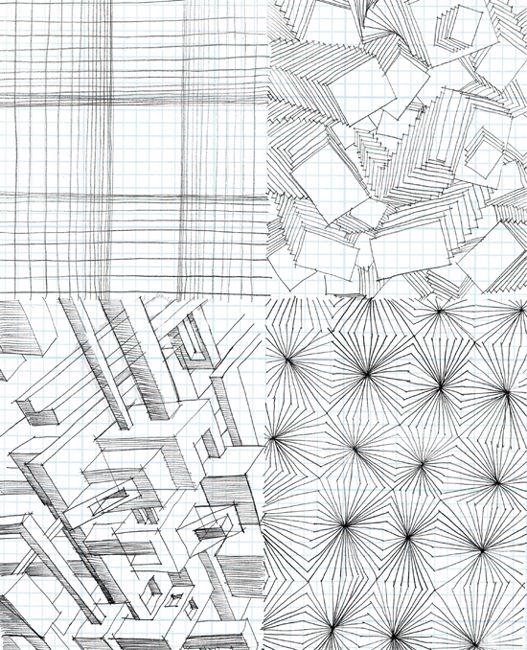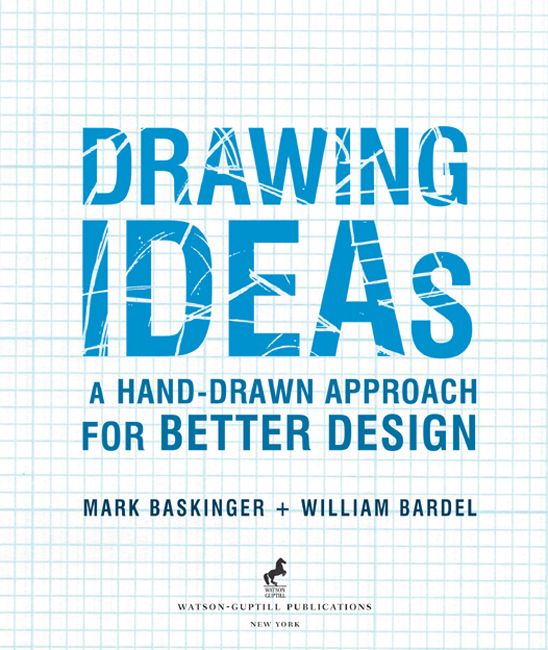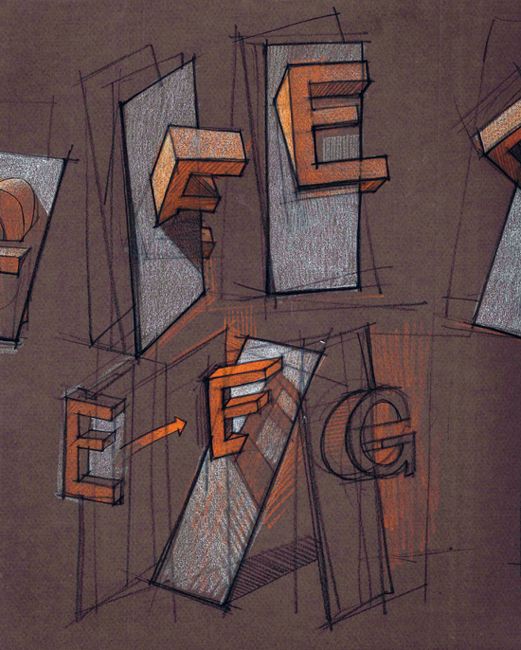Copyright 2013 by Mark Baskinger and William Bardel
All rights reserved.
Published in the United States by Watson-Guptill Publications, an imprint of the Crown Publishing Group, a division of Random House, Inc., New York.
www.crownpublishing.com
www.watsonguptill.com
WATSON-GUPTILL is a registered trademark, and the WG and Horse designs are trademarks of Random House, Inc.
Library of Congress Cataloging-in-Publication Data
Baskinger, Mark.
Drawing ideas: a hand-drawn approach for better design/Mark Baskinger and William Bardel. First Edition.
pages cm
1. DrawingTechnique. 2. Visual communicationTechnique. I. Bardel, William. II. Title.
NC730.B318 2013
741.2dc23
2012047756
eBook ISBN: 978-0-385-34452-4
Hardcover ISBN: 978-0-385-34462-3
Cover design: Maria Elias
Cover illustration: Jason May
v3.1
MARK : For Ana and Ben, whose boundless creativity is an inspiration
WILL : Dedicated to my parents; my wife, Susan; and my children, Madeline and Harrison, for all their love and support
CONTENTS
Introduction:
Pencils Before Pixels
INTRODUCTION: PENCILS BEFORE PIXELS
WITH AN ABUNDANCE of tools and technology available to create and communicate, why draw by hand? What does the pencil offer?
Your ability to draw is a fast, powerful means for thinking, reasoning, and visually exploring ideasproviding visual information for self-reflection and focused discussion with your colleagues, teams, and clients. Whether it is of a product, service, information, or system, a hand-drawn sketch communicates the essence of your idea and illustrates its potential. The simplicity of connection between mind, eyes, hand, and pencil shrugs off the layered burden that complex technology often adds. Such simplicity ensures fresh thinking and communication that is quick, clear, and immediately visible. As an act, drawing effectively encourages observation, evaluation, and helps spur collaboration and action. To understand the potential of drawing your ideas, this book focuses on key drawing behaviors: (1) drawing to record ideas or examine things from real life; (2) drawing to clarify and explore ideas further and expand upon previous ideas; and (3) drawing to explain ideas to others. Each sketching behavior serves a distinct role in the design process and contributes to developing and sharing your ideas.
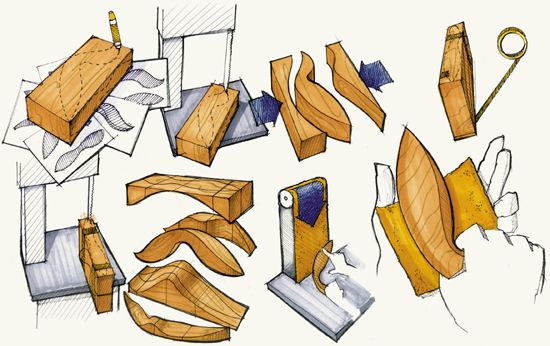
its a matter of perspective
Establishing a clear view of any complex design problem can be a challenge. The act of drawing helps you to see and think with a deeper level of engagement. Knowing how to use drawing to record and explore your ideas can help you observe problems and possibilities, effectively breaking them down into identifiable components, sequences, interactions, and modules. The perspective and focus that a good sketch provides assist in memory and are the foundation to a stronger ideation process, one that carefully studies situations and produces inventive solutions.
the power is in your hand
Like most people, you want to share your idea but are probably self-conscious about your drawing skills, especially in public while your audience watches; we all have these white-board moments when nerves kick in. Drawing a sketch canand should beempowering. It is an opportunity to command attention and persuade in compelling fashion by showing. Imagine the impact of confidently and fluidly drawing your ideas. This is the goal and why knowing how to draw remains a valuable asset for presentation and explanation. Drawing positions you to lead or direct conversation. Knowing how to clearly explain your ideas in visual form facilitates discussion and promotes understanding.
about this book
Drawing Ideas is a collection of various techniques, practices, and strategies derived from real-world applications in design practice, university-level design drawing courses, and our Drawing Ideas workshops held within conference and business contexts.
The goal of this book is to inspire by breaking down design drawing techniques, visual communication approaches, and a wealth of examples from the sketchbooks and portfolios of creative professionals and students. To afford easy reference and application, our books structure is aligned with key steps in the design process (observe, design, communicate). To help you integrate drawing into your work, we also include helpful callout tips and contributor essays based on frequently asked questions from our workshops and courses.
book organization
Drawing Ideas is divided into five sections, each with a specific focus. These can be read independently or together as the book moves from personal to public drawing perspectives. addresses the use of narrative to enhance explanatory communication.
what kind of drawer are you?
Drawing Ideas is applicable for a broad range of skill levels, from novices to experts. We include content aimed at specific audiences as well as generalized information that you will be able to adapt to your specific drawing needs.
For drawing novices, the entire book offers a wealth of information, including a drawing boot camp with practical instruction that clearly explains the fundamentals of how to create drawings that communicate clearly and effectively. Throughout the book we include methods and techniques that will help you quickly ramp up your skills and become more confident with your sketches.
For out-of-practice drawers, Drawing Ideas provides both inspiration and techniques to reintroduce basic methodologies with which you may be familiar. Drawing skills diminish quickly when youre a bit out of practice. Reviewing the basics in this book will help get you back into shape quickly, and the more advanced considerations in this book will further improve your skill level.
For experts, Drawing Ideas offers new considerations on how to structure and apply drawing. These range from often-overlooked basic tricks to advanced techniques. In particular we recommend , which introduce explanatory principles, organizational methods, and narrative structures to make your sketching more compelling.
In our careers, the ability to draw has enabled us to innovate, lead, direct, persuade, and effectively express ideas. It also has helped us invite others into conversation and bring out the best in our interdisciplinary teams. This book serves as a broad resource to provide some clarity about drawing for creative visual practice, strategy, and planningeven beyond the disciplines of design.
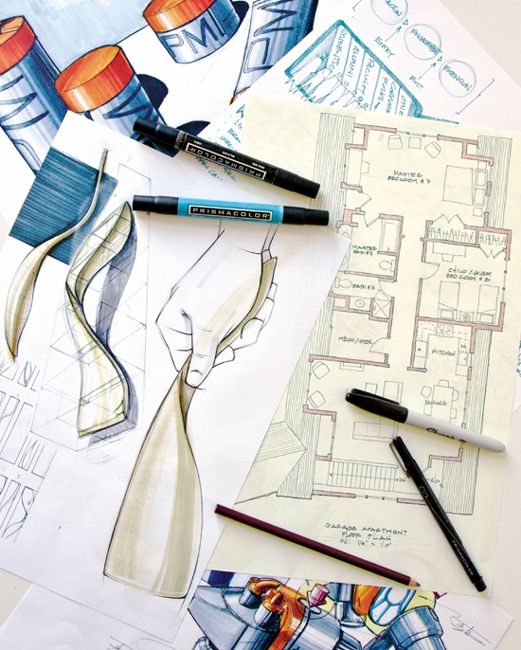
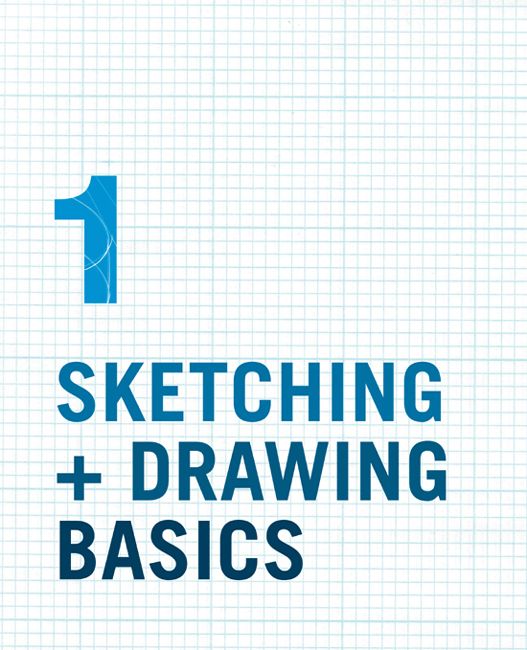
IN THIS SECTION, WE INTRODUCE THE BASIC MECHANICS AND TECHNIQUES for drawing by hand. We also present essential approaches to representing the physical and visual world to enable you to build an understanding of how you think through ideas. This section includes best practices for sketching with an emphasis on structure and achieving a correctness of formworking from basic marks on paper to using perspective systems to represent physical space. Sketching & Drawing Basics focuses on the how to sketch with supportive rationale for the why to sketch . We expect that you will gain an understanding of how to assess the quality and effectiveness of your sketches, work from a variety of exercises and examples to improve your sketching ability, and develop your own expressive style. You should feel comfortable enough to draw in this book. Mark it up with notes and ideas, and make it a reliable companion.


